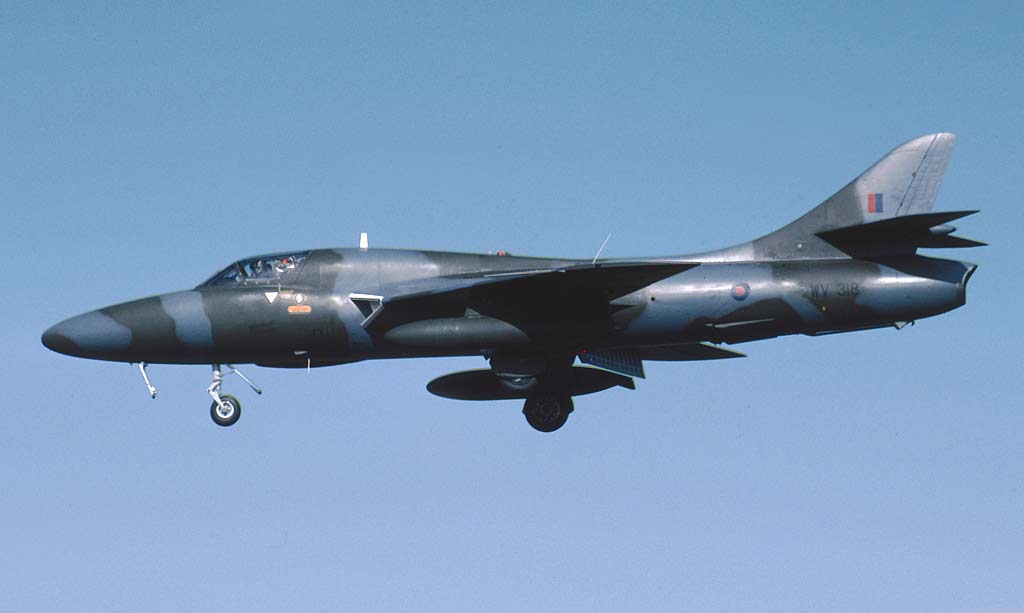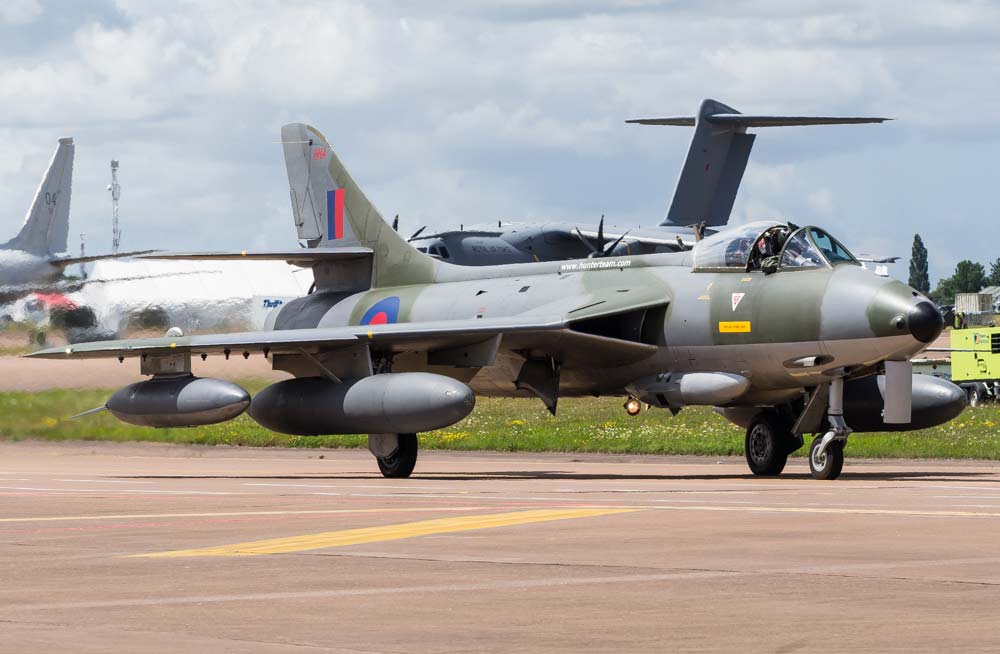The Hawker Hunter is a British single-seat, jet-powered fighter, renowned for its speed, agility, and as a Cold War-era interceptor.
In Brief
The Hawker Hunter, a transonic British jet fighter developed in the 1950s, was known for its superb performance and sleek design. Powered by a Rolls-Royce Avon turbojet engine, it achieved a top speed of 715 mph, a service ceiling of 50,000 ft, and a range of 1,450 miles. The Hunter had a wingspan of 33.4 ft and a length of 45.7 ft. It was armed with four 30mm ADEN cannons and could carry various air-to-air missiles, bombs, and rockets. The Hunter’s design included a swept wing and tailplane, an ejection seat, and an innovative airbrake design. It served as an interceptor, ground-attack aircraft, and reconnaissance platform in numerous air forces worldwide.
The Hawker Hunter, one of the most successful British post-war jet aircraft, served as a main front line fighter for the Royal Air Force and saw extensive service in various air forces around the world.

History of the Development of the Hawker Hunter
In the late 1940s, the RAF needed a new generation of jet fighters to replace the Gloster Meteor and the de Havilland Venom. The Hawker Hunter, developed to meet this requirement, was a result of the British Air Ministry’s Specification F.3/48. Designed by Sydney Camm, it first flew on July 20, 1951. The Hunter featured a swept wing and tailplane, a single Rolls-Royce Avon turbojet engine, and an armament of four 30mm ADEN cannons. The Hunter was an advancement over its predecessors, offering higher speed, better armament, and improved maneuverability. It entered service with the RAF in 1954 and quickly became a favorite among pilots for its performance and handling.
Design of the Hawker Hunter
The Hawker Hunter featured a sleek, aerodynamically efficient design with a swept wing and tailplane. The aircraft’s wingspan measured 10.26 meters, and its length was 13.95 meters. It was equipped with a Rolls-Royce Avon turbojet engine, which provided high thrust and contributed to the Hunter’s excellent performance. The Hunter’s armament included four 30mm ADEN cannons, and it could carry a variety of air-to-ground ordnance for ground-attack missions. The design also incorporated an ejection seat for pilot safety and an innovative airbrake system for rapid deceleration.
Performance of the Hawker Hunter
The Hawker Hunter’s performance was impressive for its time. The Rolls-Royce Avon turbojet engine enabled a top speed of 715 mph, a service ceiling of 50,000 feet, and a range of 1,450 miles. The Hunter was highly maneuverable and capable of performing well in both air-to-air combat and ground-attack roles. Its performance made it a formidable aircraft compared to contemporaries such as the North American F-86 Sabre and the Mikoyan-Gurevich MiG-15.
Variants of the Hawker Hunter
The Hawker Hunter was produced in several variants, including the F.1 (initial production model), F.4 (upgraded engine and fuel capacity), F.5 (Sapphire engine variant), F.6 (improved engine and “dogtooth” wing leading edges), and FR.10 (reconnaissance variant). The T.7 and T.8 were two-seat trainer versions. The Hunter was also produced under license in the Netherlands and Belgium.

Military use and combat of the Hawker Hunter
The Hawker Hunter saw extensive military use, particularly by the RAF and several foreign air forces. It participated in conflicts such as the Suez Crisis, the Indo-Pakistani Wars, and the Aden Emergency. The Hunter was effective in both air-to-air combat and ground-attack roles, proving its versatility and effectiveness in various operational scenarios. The aircraft was eventually replaced in RAF service by more modern designs, but it continued to serve in other air forces for many years.
The Hawker Hunter remains a classic example of British aviation engineering and a testament to the design and performance capabilities of jet fighters of its era. Its legacy continues through its impact on aviation history and the many air forces it served.
Back to the Fighter Jet section.